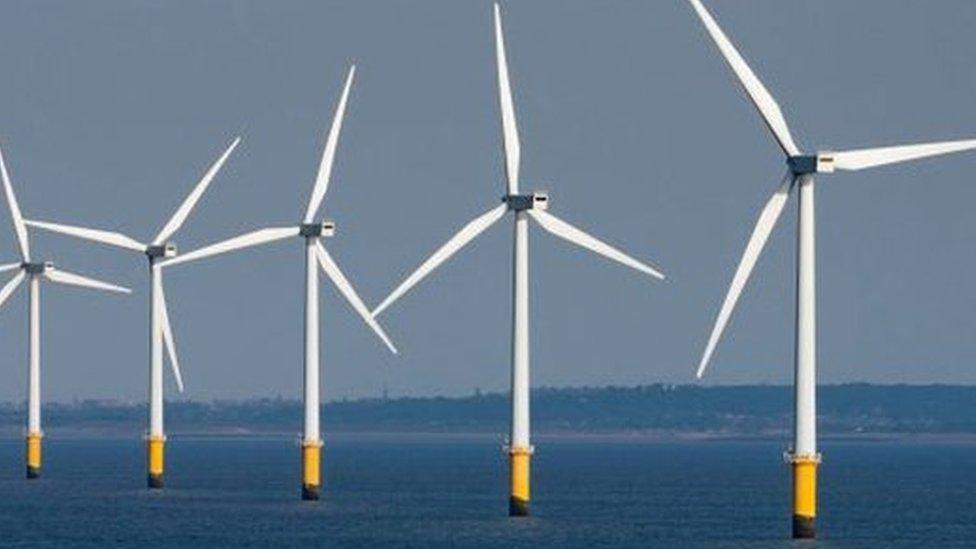The apprentices looking for careers offshore
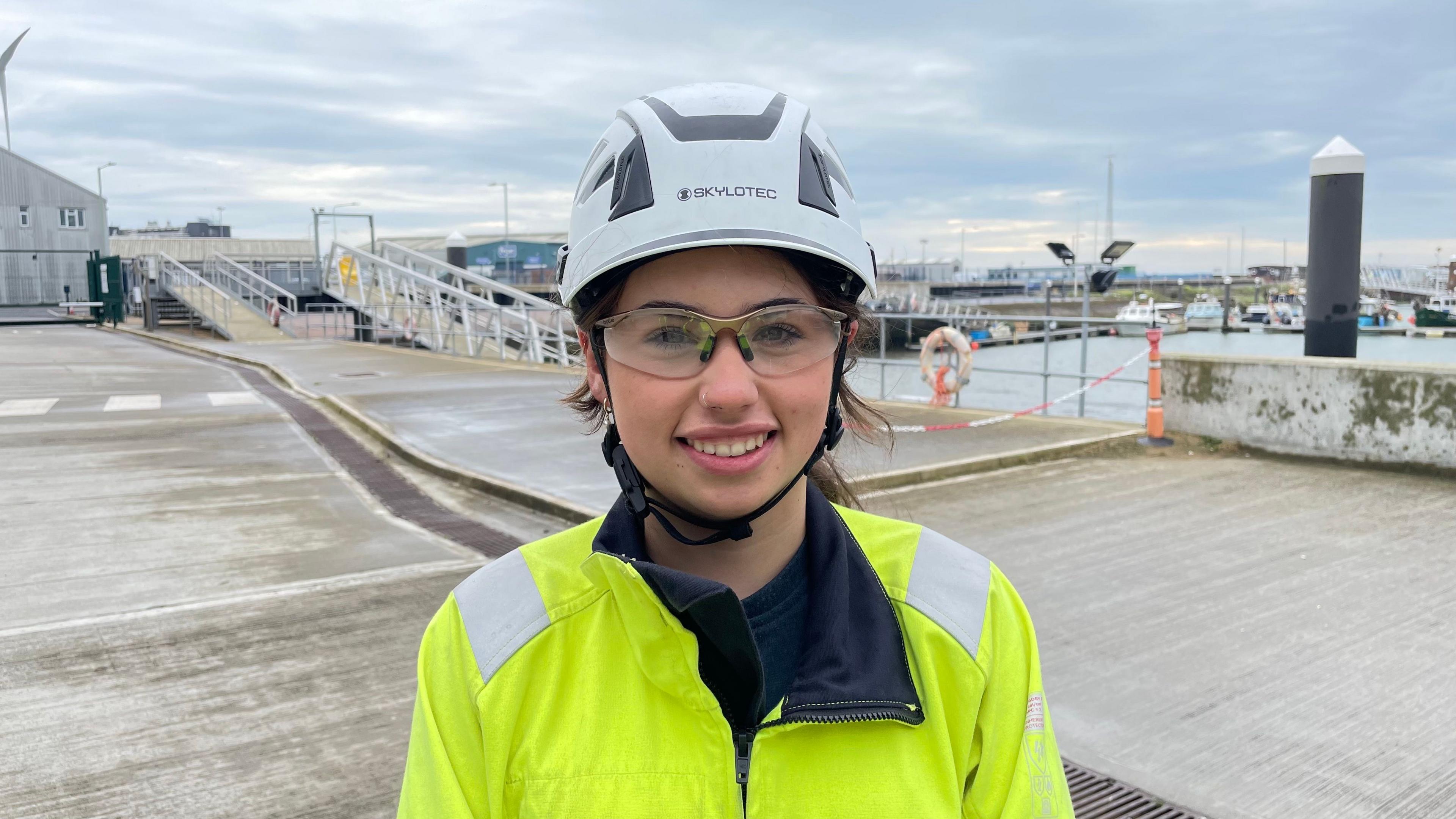
Megan Dorsett, 22, has been an apprentice with Siemens Gamesa working in renewable energy since 2021
- Published
The threat of sea sickness, early starts and lunch with "the best view you could think of". The offshore wind industry could treble its workforce to more than 100,000 by 2030. By then it could also be providing half the UK's electricity. What do apprentices who help keep North Sea turbines spinning make of the opportunities in the sector?
Megan Dorsett remembers seeing wind turbines on family trips to the seaside.
"As a kid, we would always come to the beach and every time you drive to the beach from Norwich - no matter what way you take, what beach you go to - you always see turbines.
"I remember asking my parents 'how do they work?' and it was just 'the wind spins them and it [makes] electricity' and that was never enough. So I just had to learn."
Now 22, Megan is approaching the end of an apprenticeship working on the East Anglia One wind farm - 102 turbines in the southern North Sea, 27 miles (43km) off the Suffolk coast and capable of producing 714MW of electricity.
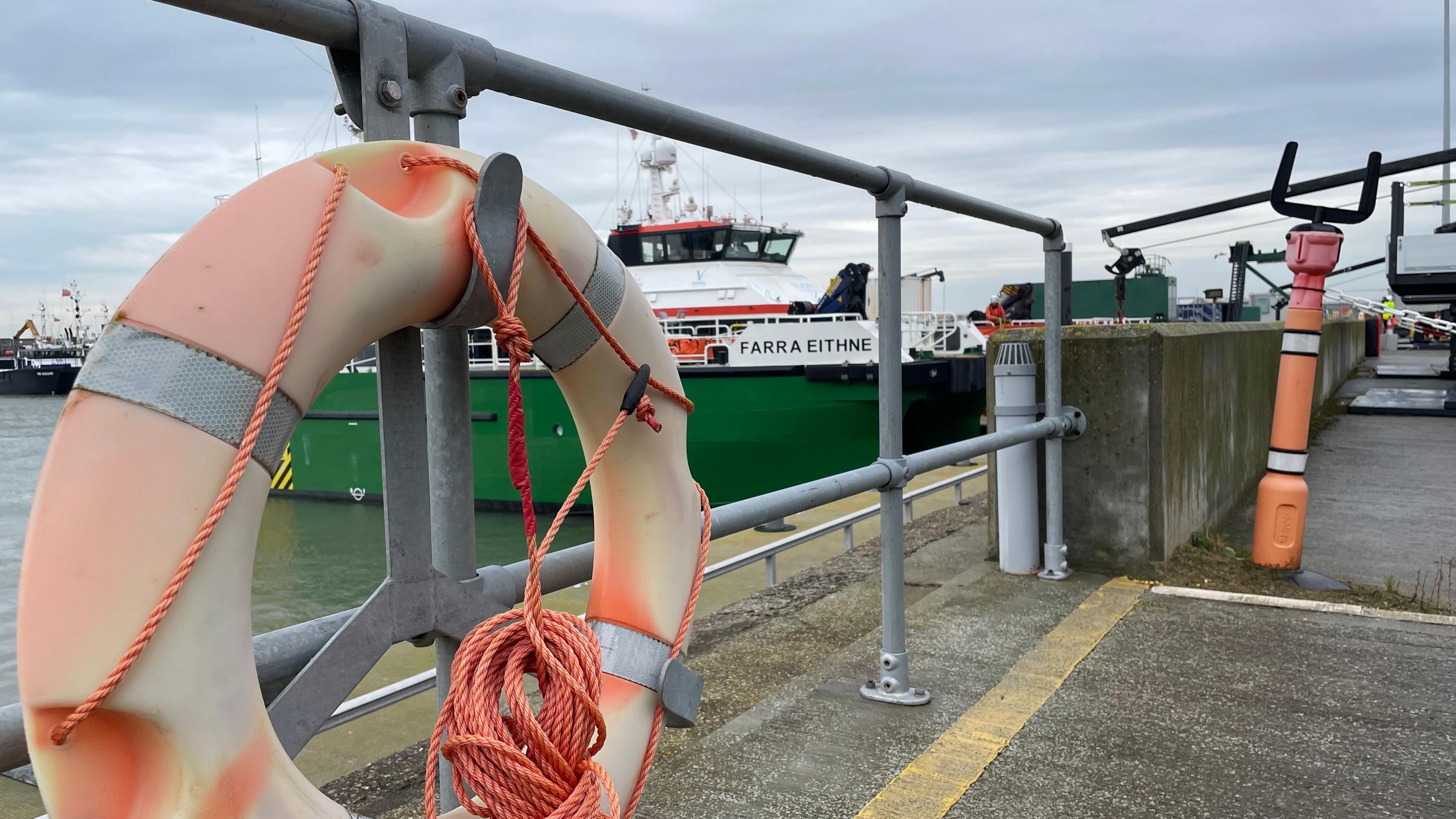
Around 100 long term jobs were created in Lowestoft by East Anglia One
It is a little after 7.30am when we meet on the quayside at the Port of Lowestoft. For around an hour, a small flotilla of service vessels have been loaded with equipment before beginning the hour or so sail to the wind farm.
Despite the early start, Megan's enthusiasm is undimmed.
"I've learnt loads. It's hard to pick the best bits. It's been an amazing experience," she says.
Her apprenticeship with turbine manufacturer Siemens Gamesa included working on electronics, hydraulics and pneumatics.
A normal day begins with an early morning brief, loading the boats, sailing to the wind farm and then, she says, "get all the work done, have a bit of lunch with the best view you could think of".
"Just keep 'em spinning and keep energy coming in."
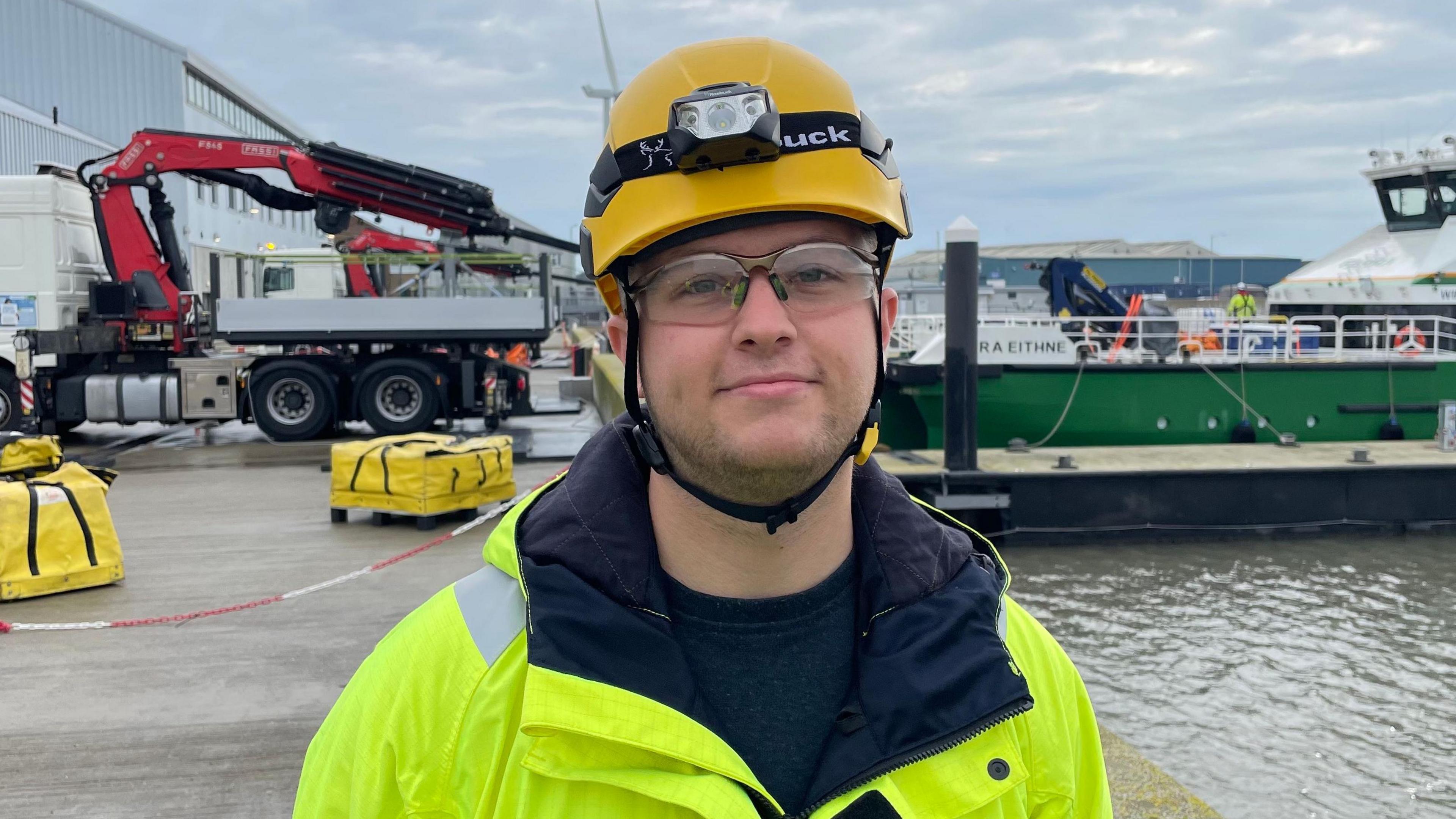
Hayden Wright said the fishing industry had "left its soul" in Lowestoft
East Anglia One was completed in 2020 and has its control centre in a new £25m building on the Port of Lowestoft quayside, where around 100 staff are based.
Lowestoft is no stranger to looking offshore. The town has had a fishing fleet for centuries and has been home to ship building.
In its heyday, there were said to have been 1,100 vessels, external registered in the town's harbour.
Now, the fishing fleet is around a dozen boats.
While traditional industries have waned, the spirit of working offshore remains.
"I think it's part of living at the coast - it must have been something from my ancestors that told me to go and work offshore or work at sea," said Hayden Wright, 25 and from Lowestoft.
He is now a year and a half into an apprenticeship with Siemens Gamesa.
"I've always loved being by the coast and looking out at sea - it feels familiar, like home."

The East Anglia One control room is in a new building on the quayside at the Port of Lowestoft
According to ScottishPower Renewables, which built and operates East Anglia One, all the staff working on the wind farm live within 30 miles of its base.
The Offshore Wind Industry Council said the sector supported 31,000 jobs, external, which could rise to 100,000 by 2030.
By then it could be providing half of the UK's electricity.
Hayden said the fishing industry had "left its soul in Lowestoft" but he saw his future in energy.
"It's just creating that green energy - renewables. It's the way forward for not only my generation.. but the generation after me.
"My kids, grandkids, they'll have a future here."
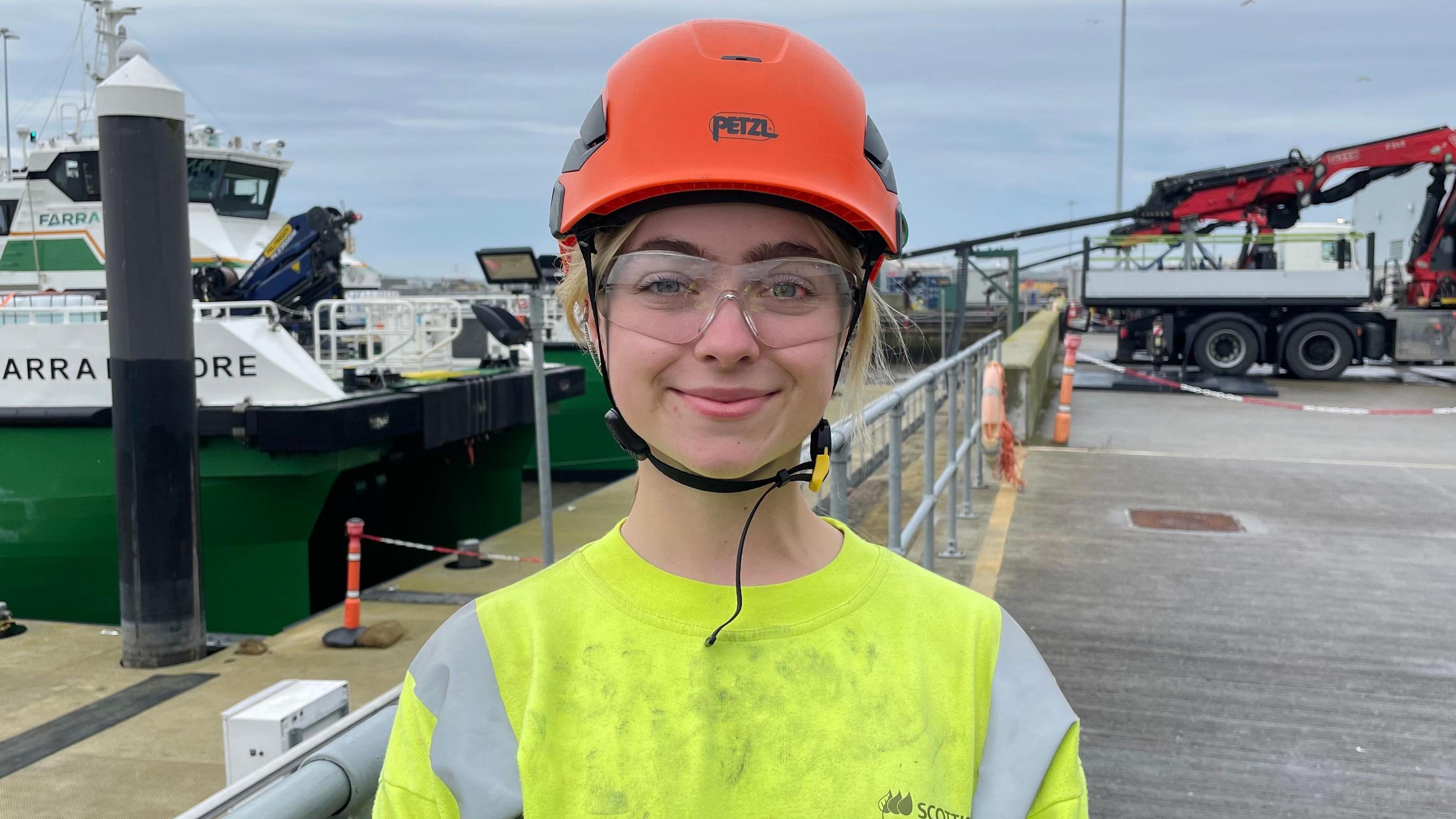
Jovita Beeston said working offshore each day "is such a huge thing"
Jovita Beeston, 21 and originally from Norfolk, has just completed her three-year apprenticeship with ScottishPower Renewables and is working as a technician on the wind farm.
Her job involves maintaining the structure, like the foundation, and some of the equipment out at sea, including the hydraulic cranes.
"It's a really exciting job," she says. "To be able to say I go offshore on a day-to-day basis is such a huge thing."
And the future?
"I don't think I could pinpoint where I want to be, because I'm still experiencing everything there is to offer."
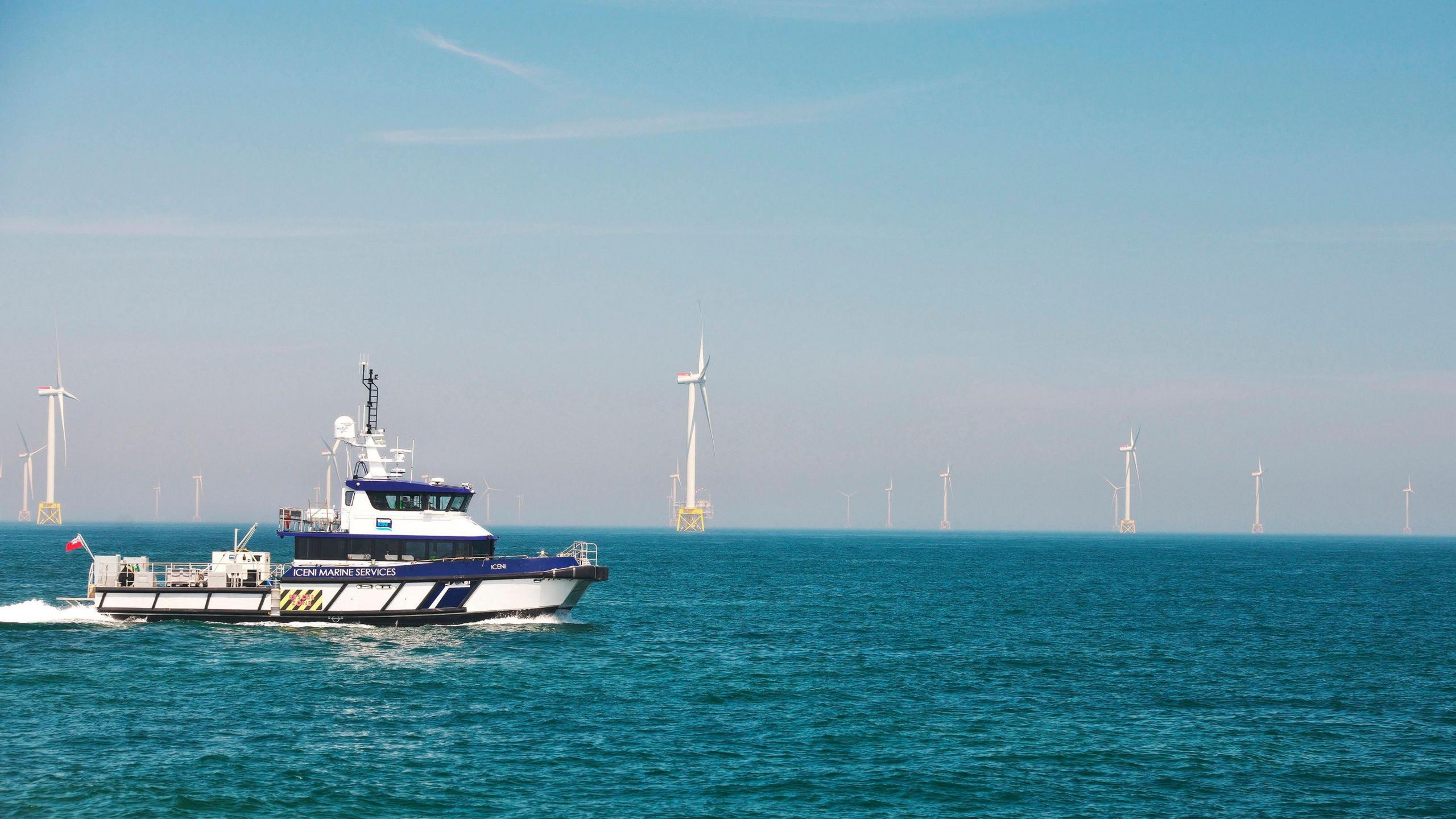
The East Anglia One wind farm includes 102 turbines and is around 27 miles (43km) off the Suffolk coast
The East of England is home to almost half , external- 44% - of the UK's offshore wind farms. Their total capacity is around 5GW, with almost another 10GW in the pipeline.
Gillian Noble, who leads on offshore development and operations for ScottishPower Renewables, said that means "investment, jobs and opportunities for decades to come".
"Our green workforce of the future are still at school, so it’s great to showcase the difference this is making and will continue to make - not just those at the start of their careers, but also for many of our current colleagues who have made the transition from oil and gas - for years and years," she said.
But there are potential downsides. Some in the fishing industry fear the impact turbines and their cables have on fish stocks.
National Grid is also proposing a Great Grid Upgrade, external, in part to bring energy generated in the North Sea to communities onshore. That could mean hundreds of miles of new pylons and cabling built across the countryside.
Last year the government increased the subsidies available, external to offshore wind farms by up to two thirds.
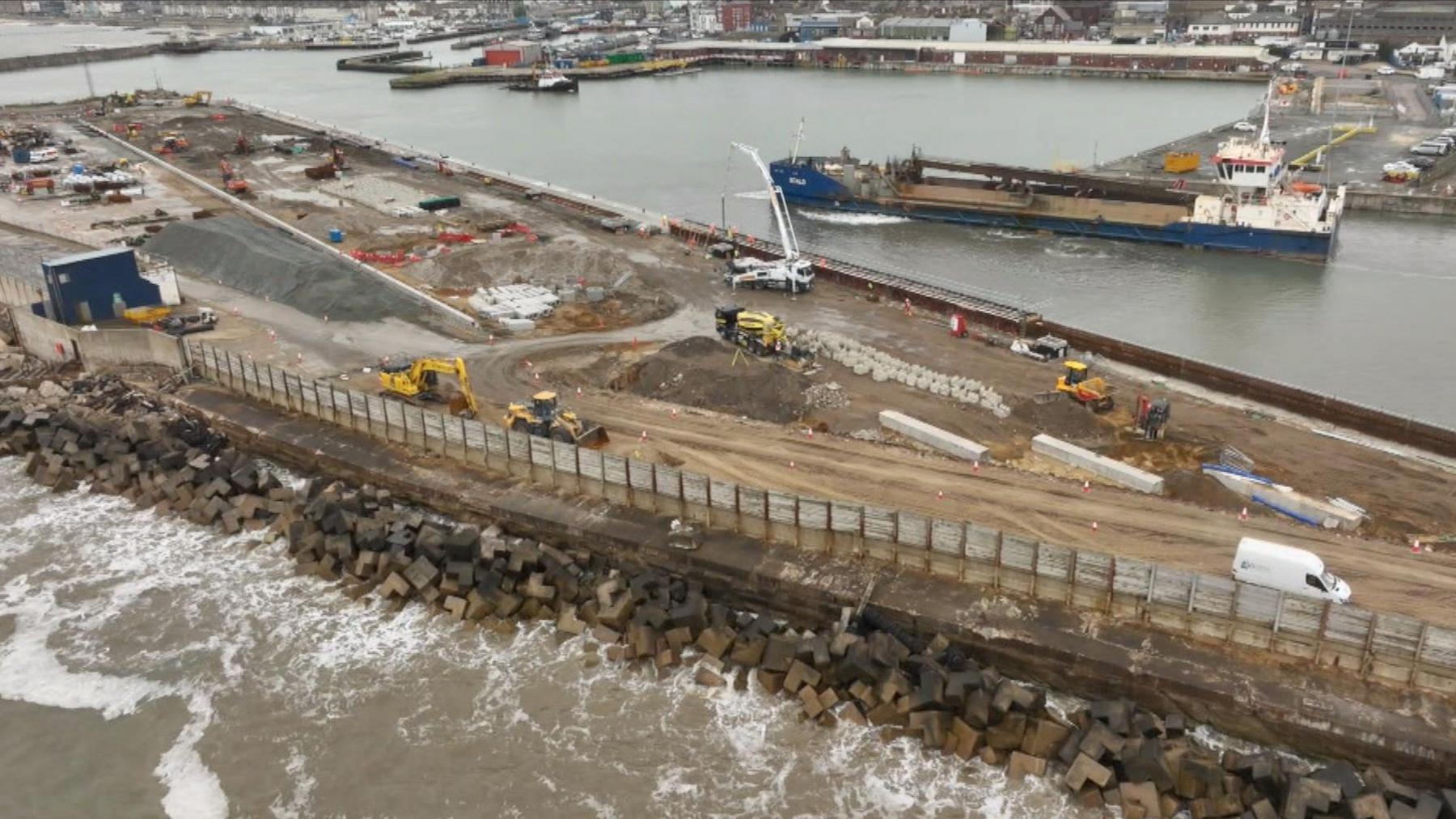
The outer harbour of the Port of Lowestoft is getting a £34m upgrade so it can accommodate bigger ships working in the energy industry
ScottishPower Renewables is now building East Anglia Three, whose generating capacity will be almost double East Anglia One.
It will have slightly fewer turbines, but their blades will be longer.
The Port of Lowestoft is hoping to capitalise on the investment in renewables.
Its owner, Associated British Ports, is upgrading the outer harbour so it can accommodate larger vessels for the energy industry.
The LEEF - Lowestoft Eastern Energy Facility, external - is costing around £35m, with £2.4m coming from the previous government's Towns Fund.
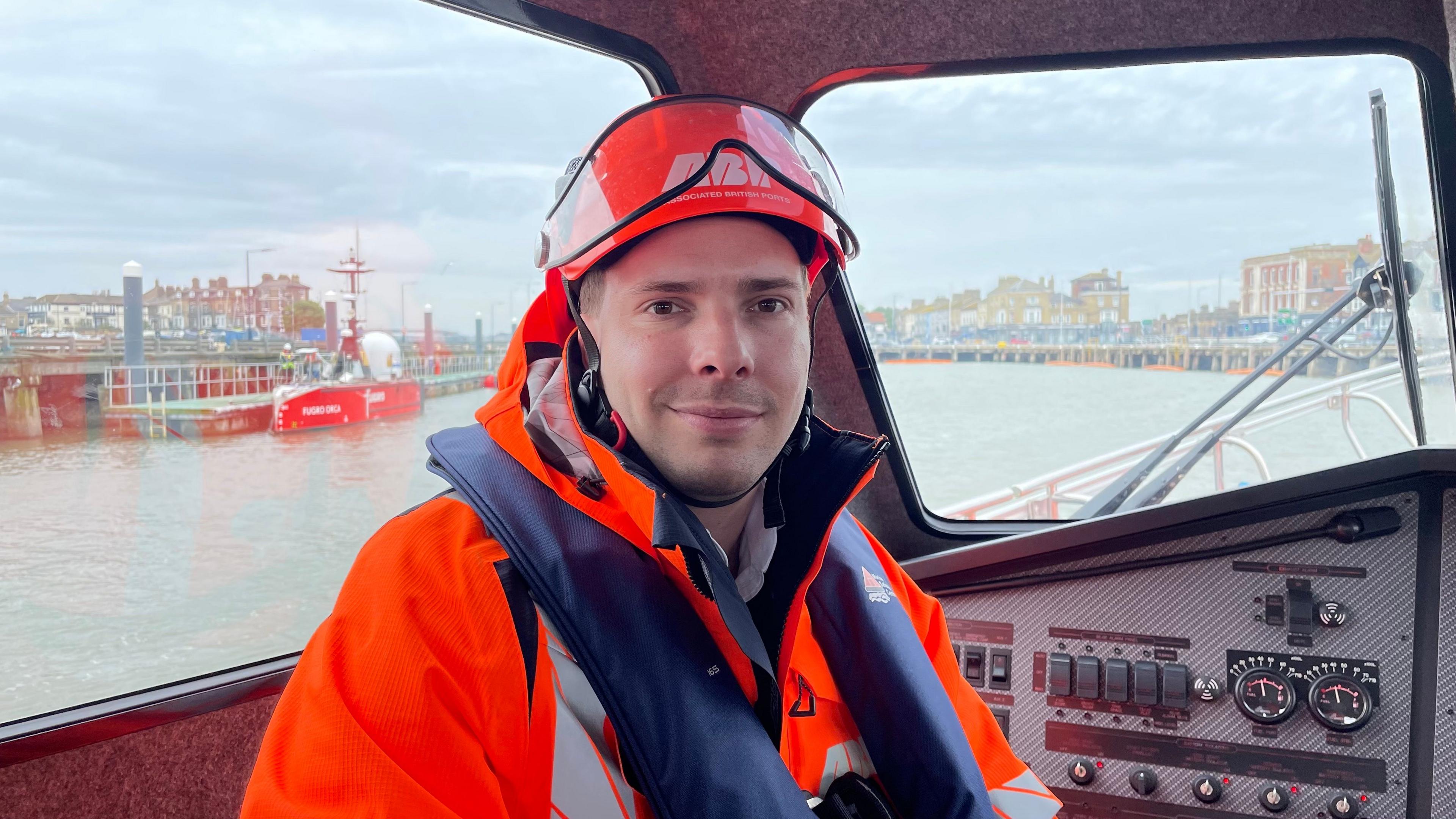
Tom Duit says the Port of Lowestoft's profits are around five times higher than 10 years ago, largely because of traffic from the energy industries
Tom Duit, the port's operations manager, said the new facility should support between 400 and 700 new jobs in Lowestoft and across the supply chain.
He said the port was already seeing "significant amounts of larger vessels associated with the energy industry calling at the port". Profits at the port have increased five-fold over the past 10 years, he added.
"For what was a relatively quiet, sleepy port on the east coast, we've now got a really prosperous, excellent future to look forward to because of the energy industry," Mr Duit said.
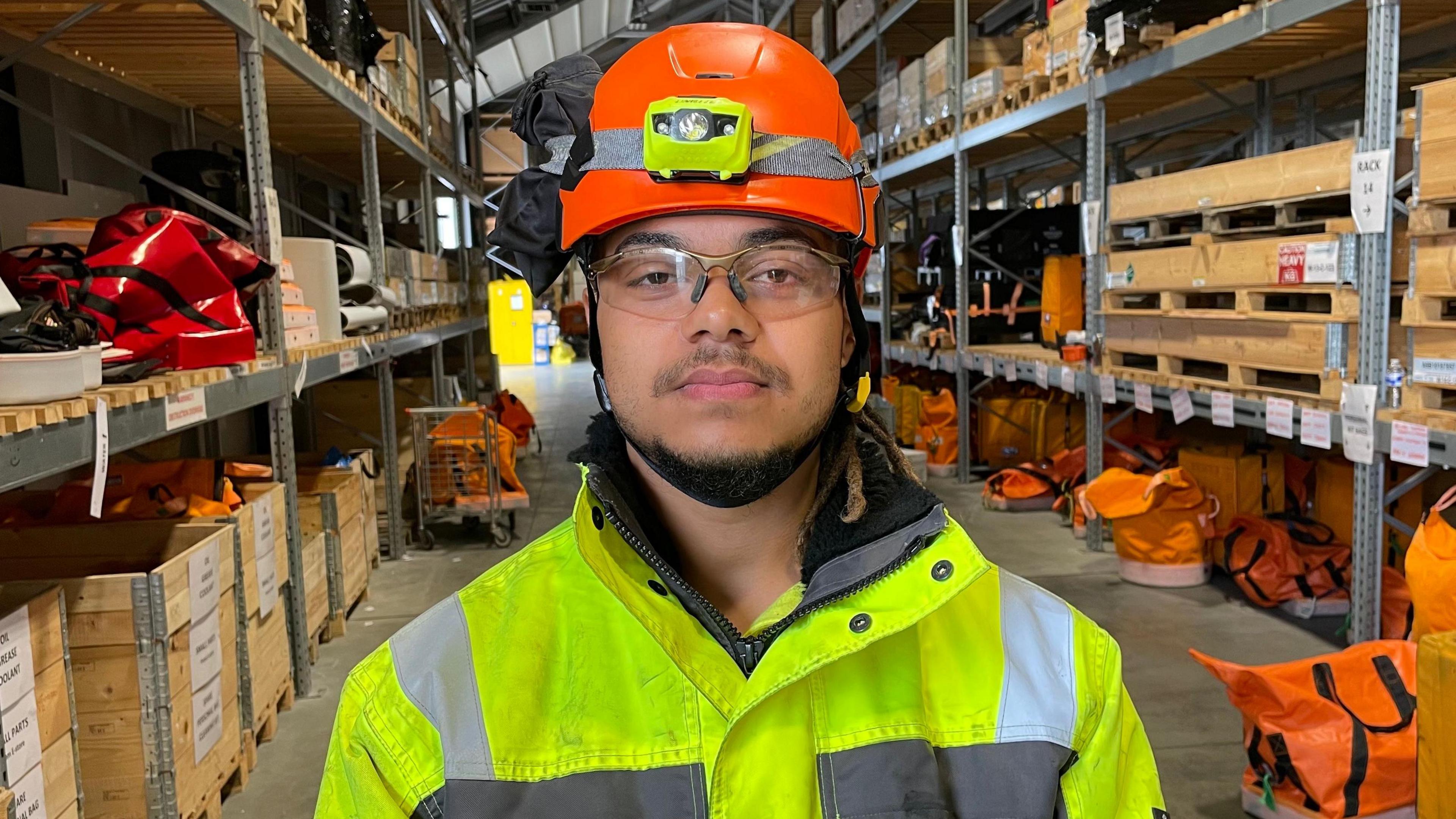
Bailey Woolston said he is grateful to have fallen into "such a good career" on his doorstep
Bailey Woolston, 21, said things have "worked out pretty well" for him.
He is coming to the end of his apprenticeship with the energy company and said part of the attraction was working in a new industry, which offered "ways to innovate and opportunities to learn".
"I'm local to the area and opportunities like this don't necessary come up every single day for a lot of people and the fact that it's right on my doorstep and that I've been able to fall into such a good career that could potentially last for 20 to 30 years - it's been really good," he added.
Crews use what should be calmer summer conditions to do maintenance work on the turbines, which should see them through the winter.
But in the control room, the July weather was described as "not the greatest".
Looking up at one of the screens, Troy Vallis-Allen said there was a "small risk of lightning out there, lots of rain, mist, fog".
"There's days when it's rough and you feel your stomach turn, but I've never experienced full seasickness so far," said Bailey.
And Megan's advice for avoiding queasiness?
"Ah - ginger biscuits! I think that's the best one," she says.
Follow Suffolk news on Facebook, external, Instagram, external, and X, external. Got a story? Email eastofenglandnews@bbc.co.uk, external or WhatsApp us on 0800 169 1830
- Published12 March 2024
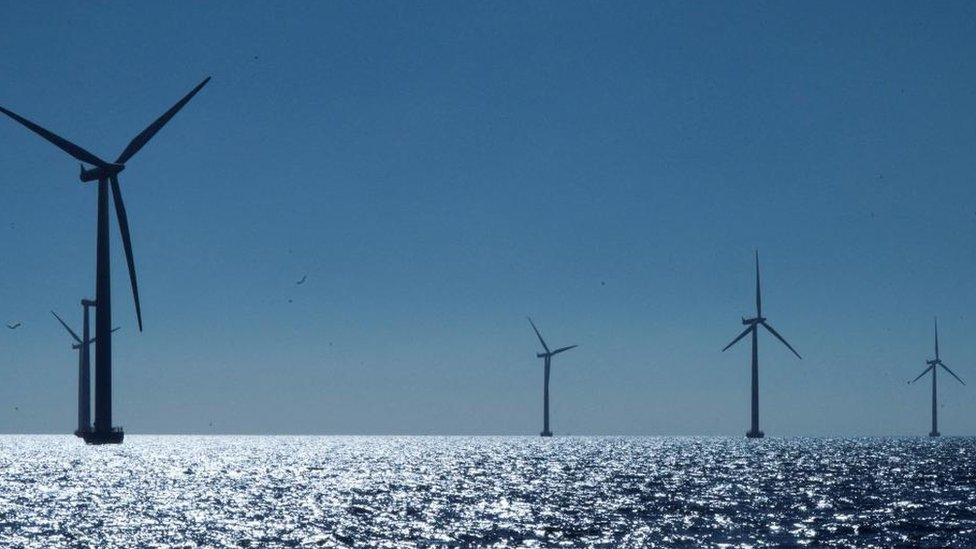
- Published14 July 2023
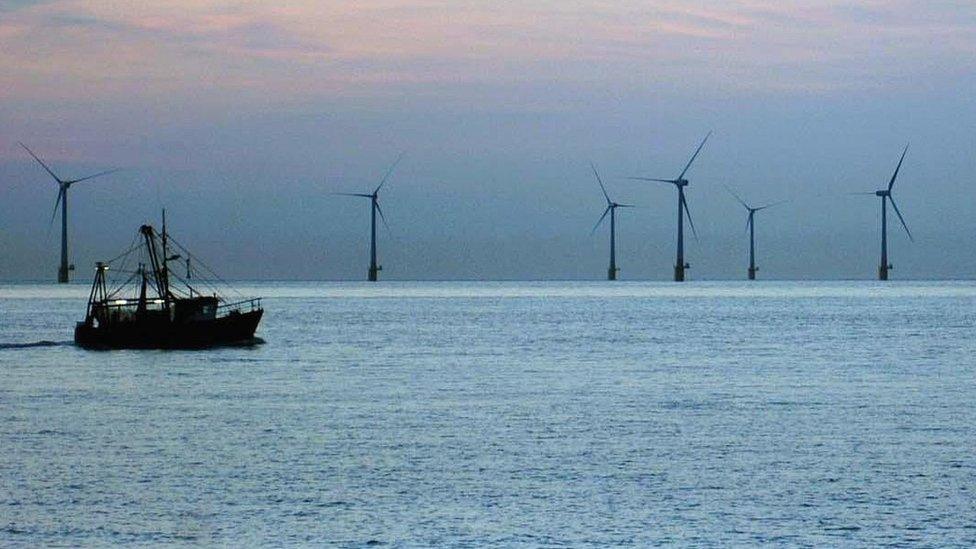
- Published28 June 2019
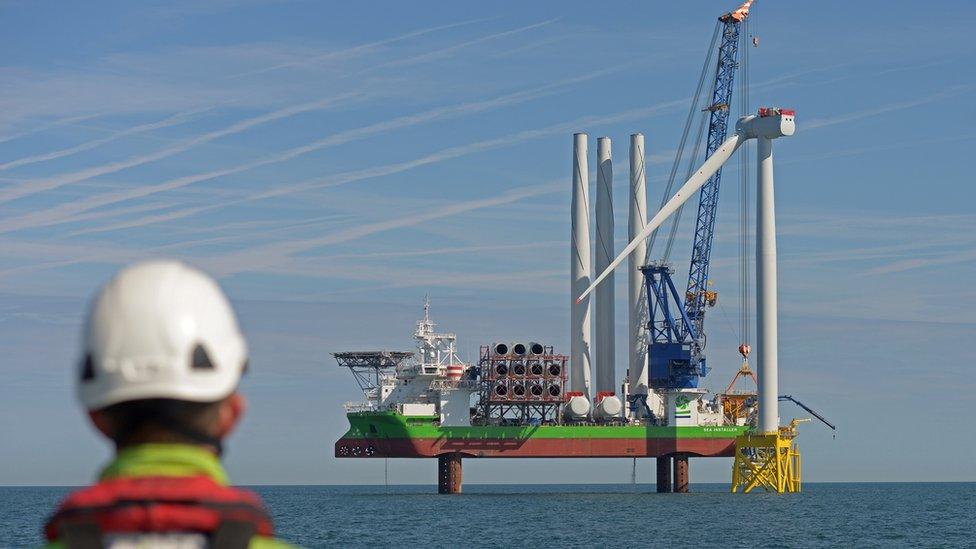
- Published7 September 2023
